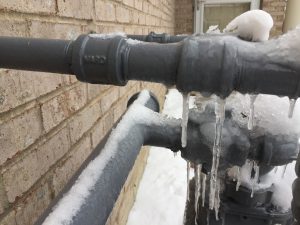Everyone may have their unique way of thinking in relation to How to prepare your home plumbing for winter weather.

Cold weather can wreak havoc on your plumbing, especially by freezing pipelines. Below's just how to stop it from taking place and what to do if it does.
Introduction
As temperatures decrease, the risk of icy pipelines rises, potentially leading to costly repair services and water damage. Understanding how to stop frozen pipes is vital for homeowners in cold environments.
Comprehending Icy Pipelines
What causes pipelines to freeze?
Pipelines freeze when revealed to temperatures below 32 ° F (0 ° C) for extended durations. As water inside the pipelines freezes, it increases, putting pressure on the pipeline walls and possibly causing them to rupture.
Threats and damages
Icy pipes can cause supply of water disturbances, home damages, and expensive fixings. Ruptured pipes can flood homes and trigger considerable architectural damages.
Indicators of Frozen Pipes
Identifying icy pipelines early can stop them from breaking.
Just how to recognize frozen pipes
Search for reduced water circulation from taps, unusual odors or noises from pipes, and visible frost on revealed pipes.
Prevention Tips
Insulating vulnerable pipes
Wrap pipelines in insulation sleeves or make use of warm tape to safeguard them from freezing temperatures. Focus on pipes in unheated or external locations of the home.
Heating techniques
Maintain indoor areas adequately heated, particularly locations with pipes. Open up cupboard doors to allow warm air to distribute around pipes under sinks.
Securing Outside Plumbing
Garden tubes and outdoor taps
Disconnect and drain pipes garden tubes prior to winter months. Install frost-proof faucets or cover outdoor faucets with shielded caps.
What to Do If Your Pipes Freeze
Immediate actions to take
If you presume icy pipes, keep taps open to soothe pressure as the ice melts. Utilize a hairdryer or towels taken in warm water to thaw pipelines gradually.
Long-Term Solutions
Architectural changes
Consider rerouting pipes away from exterior wall surfaces or unheated locations. Include added insulation to attic rooms, cellars, and crawl spaces.
Upgrading insulation
Buy high-quality insulation for pipes, attics, and wall surfaces. Correct insulation aids keep regular temperature levels and minimizes the danger of frozen pipes.
Final thought
Protecting against frozen pipes calls for aggressive procedures and quick responses. By recognizing the reasons, indications, and preventive measures, house owners can safeguard their pipes during cold weather.
6 Proven Ways to Prevent Frozen Pipes and Protect Your Home
Disconnect and Drain Garden Hoses
Before winter arrives, start by disconnecting your garden hoses and draining any remaining water. Close the shut-off valves that supply outdoor hose bibs and leave the outdoor faucet open to allow any residual water to drain. For extra protection, consider using faucet covers throughout the colder months. It’s also important to drain water from any sprinkler supply lines following the manufacturer’s directions.
Insulate Exposed Pipes
Insulating your pipes is an effective way to prevent freezing. Pipe insulation is readily available at home improvement stores and is relatively inexpensive. Pay close attention to pipes in unheated areas such as the attic, basement, crawl spaces, or garage. Apply foam insulation generously to create a buffer against the cold. You can also wrap your pipes in heat tape or thermostat-controlled heat cables for added warmth.
Seal Air Leaks
Inspect your home for any cracks or openings that could let in cold air. Seal any holes around the piping in interior or exterior walls, as well as the sill plates where your home rests on its foundation. Additionally, make sure to keep your garage door closed unless you’re entering or exiting. Leaving it open creates a significant air leak that can lead to frozen pipes.
Allow Warm Air Circulation
During cold snaps, it’s essential to allow warm air to circulate evenly throughout your home. Leave interior doors ajar to promote better airflow. Open kitchen and bathroom cabinets to help distribute heat consistently around the rooms. If you have small children or pets, be sure to remove any household chemicals or potentially harmful cleaners from open cabinets for safety.
Let Faucets Drip
A small trickle of water can make a big difference in preventing ice formation inside your pipes. When temperatures drop significantly, start a drip of water from all faucets served by exposed pipes. This continuous flow helps prevent the water from freezing. Additionally, running a few faucets slightly can relieve pressure inside the pipes, reducing the chances of a rupture if the water inside does freeze.
https://choateshvac.com/6-proven-ways-to-prevent-frozen-pipes-and-protect-your-home/

I have been very focused on Winter Plumbing Precautions: Preventing Frozen Pipes and I really hope you enjoyed reading the blog entry. Remember to set aside a second to distribute this content if you enjoyed it. Bless you for your time. Return soon.
Set An Appointment
Comments on “Guidance for Avoiding Frozen Pipes in Cold Weather: Professional Tips”